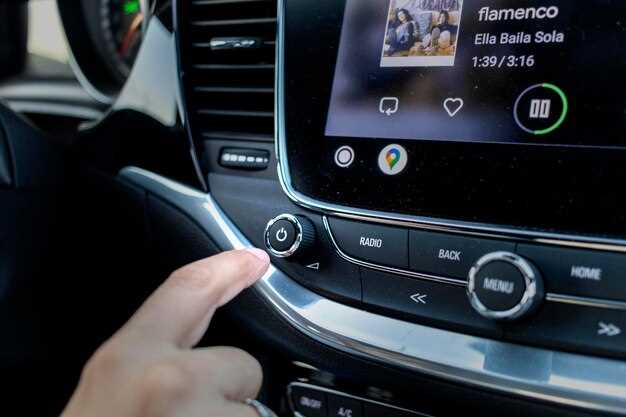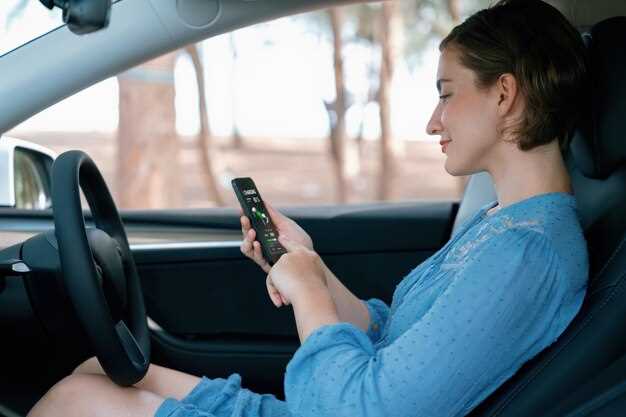
In today’s fast-paced world, smartphones have become indispensable tools for navigating daily life, and their integration with automotive technology marks a significant transformation in how we interact with our vehicles. The rise of Apple CarPlay and Android Auto has revolutionized the driving experience by seamlessly connecting your smartphone to your car’s infotainment system. This integration not only enhances convenience but also elevates safety standards while on the road.
One of the most notable advantages of such integration is the ability to access apps directly from your vehicle’s display. With features like navigation services, you can easily find directions, discover alternate routes, and even receive real-time traffic updates without the need to pick up your smartphone. This functionality ensures that drivers remain focused on the road while still having access to essential information, promoting safer driving habits.
Moreover, Apple CarPlay and Android Auto provide an effortless way to stay connected with friends, family, and work. Hands-free calling, text messaging, and music streaming are just a voice command away, allowing you to maintain communication without compromising safety. The intuitive interface of these systems is designed specifically for minimal distraction, ensuring you can enjoy the benefits of your smartphone while keeping your attention where it belongs–on the road.
Enhancing Smartphone Usability While Driving

The integration of Apple CarPlay and Android Auto dramatically improves the usability of smartphones for drivers. These systems bridge the gap between vehicle controls and mobile devices, enabling a seamless transition from road to app. With voice commands and user-friendly interfaces, drivers can access essential smartphone features without taking their eyes off the road.
One of the key benefits is the hands-free functionality. By utilizing voice recognition technology, users can make calls, send texts, and access navigation apps simply by speaking. This allows for enhanced interaction with the smartphone while maintaining focus on driving, significantly reducing distractions.
Moreover, the integration provides a simplified display of important applications, such as music, maps, and messaging. These apps are reorganized on the car’s infotainment screen, making it easier for drivers to engage with their smartphone content without navigating through complex menus. The design is tailored specifically for driving environments, promoting safety and efficiency.
Additionally, smartphone integration can also receive real-time updates through apps like Google Maps or Apple Maps. This ensures that drivers stay informed about traffic conditions, road closures, and alternate routes, all of which enhances the driving experience while minimizing the risk of becoming distracted by phone-related tasks.
In summary, Apple CarPlay and Android Auto significantly enhance smartphone usability while driving by promoting hands-free operation, simplifying user interfaces, and providing real-time information. These features minimize distractions, allowing drivers to remain focused on the road while making the most of their smartphones’ capabilities.
Seamless Access to Navigation and Music Apps
One of the primary advantages of Apple CarPlay and Android Auto integration is the seamless access to navigation and music applications directly from your vehicle’s infotainment system. This connectivity allows drivers to utilize their smartphones in a way that enhances the driving experience while ensuring safety.
With Apple CarPlay, users can leverage popular navigation apps like Apple Maps, Google Maps, and Waze. These applications provide real-time traffic updates, turn-by-turn directions, and alternate route suggestions, making it easier to navigate through unfamiliar areas. The intuitive interface mirrors your smartphone, allowing for easy access to features without the need to fiddle with your phone while driving.
Similarly, Android Auto offers access to renowned navigation tools such as Google Maps and Waze, allowing for a smooth transition between smartphones and the car’s platform. This integration means that drivers can receive directions audibly and visually on the car’s display, making it more user-friendly and reducing distractions.
In addition to navigation, both systems offer robust access to music applications. Users can easily connect to popular streaming services like Spotify, Apple Music, and Pandora. This connectivity provides an effortless way to browse playlists, select songs, and control playback while keeping hands on the wheel and eyes on the road.
The ability to access these applications without having to handle the smartphone directly enhances driver safety. Voice commands can be employed to control navigation and music playback, further reducing distractions. This seamless integration transforms the vehicle into an extension of the smartphone, ultimately making daily commutes and road trips more enjoyable and efficient.
Improving Safety Features Through Voice Control

Voice control represents a significant advancement in vehicle safety, enabling drivers to interact with their smartphones without taking their hands off the wheel or eyes off the road. Both Apple CarPlay and Android Auto seamlessly integrate voice command functionalities, allowing users to manage navigation, make calls, and send messages safely.
By utilizing voice recognition technology, these integrations reduce the risk of distractions that often come with manual phone use. Drivers can issue commands such as “navigate to” or “play music” effortlessly, enabling them to maintain focus on driving conditions. This hands-free operation minimizes the cognitive load on the driver, ultimately contributing to a safer driving experience.
Moreover, voice control systems often learn and adapt to users’ speech patterns, enhancing their accuracy over time. This personalized experience further ensures that commands are recognized promptly, minimizing delays that could lead to unsafe situations. By streamlining interactions, drivers become less frustrated and more attentive on the road.
Implementing voice control technology in vehicles not only aligns with hands-free regulations but also promotes a safer driving culture. As smartphone dependency continues to grow, prioritizing voice interaction in vehicles will be crucial for reducing accidents attributed to distracted driving. Consequently, both Apple CarPlay and Android Auto play a crucial role in advancing automotive safety through innovative voice control features.



